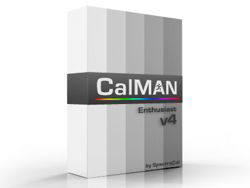“Since the advent of the CD, listeners have been deprived of the full experience of listening.” - Neil Young PonoPlayers...
Read More »
SpectralCal CalMAN 4.1 Video Calibration Software

Mark Vignola has posted a review of the CalMAN 4.1 calibration software ($software only $199, with X-Rite ColorMunki spectroradiometer $599) for do-it-yourself calibration of video displays and projectors at Secrets of Home Theater and High Fidelity. His conclusions:
The CalMAN 4.1 software is undoubtedly a very powerful and sleek improvement on the previous version. I was able to get my display calibrated to reference standards in a fairly efficient manner. If you are a novice looking to get into fairly complex calibration, the software will allow you to do this with minimal background through the use of their interactive feature.
CalMAN remains one of the top choices of professional calibrators and its easy to see why. The program is not only exceptionally powerful, but highly customizable. Because this review is targeted at enthusiasts, I talked little of the amount of customization that the program has - but suffice it to say - if there is a way in which you’d like to see the data presented, it is very likely that CalMAN can present it that way. While my review was looking at the use of CalMAN 4 by enthusiast instead of professional users, I would be remiss in not mentioning the sheer power that I believe this software provides through this type of customization. I’m not sure if this power adds much for the enthusiast user but it is certainly something that makes CalMAN unique and attractive for professional calibrators.
Regarding the Interactive control – there no doubt it is an amazing advancement, and one I think will make calibration easier for those who really don’t know where to get started. An 11-point grayscale and gamma calibration is a sophisticated process and the interactive feature makes it very approachable for even the most novice calibrator. As this feature gets incorporated into more displays, I believe it’ll make complex calibration even easier. As a more experienced user, I found that the interactivity slowed me down a little – perhaps this was the result of the speed of my Choma5 versus other meters that I’ve used with this process. I would have preferred a bit more hybrid of an approach - whereby we incorporate more of the displays native capabilities into the calibration. Features like 2-point grayscale are exceptionally common and easily accessible (no more service menu needed) and might decrease the time needed for calibration significantly as well as decrease the amount of work that the Duo would have to do. This way, a user or calibrator could use things like 2-point grayscale control to get a display close, and then use interactive calibration features to deal with any lingering problems. As it stands now, the interactive feature is kind of all-or-none and while it is possible to be customized to add the desired features, I think this is a little beyond the average user who would benefit most from the interactive approach. In the end, I found it slower than just calibrating the projector on my own. Certainly as CalMAN adds more direct display control to its list, this aspect will become less important.
Overall, CalMAN 4.1 is an exciting development in calibration science. The Interactive Control feature represents a major advancement in calibration and I look forward to seeing where the SpectraCal team brings it to in the future.
You can read the full review here.

